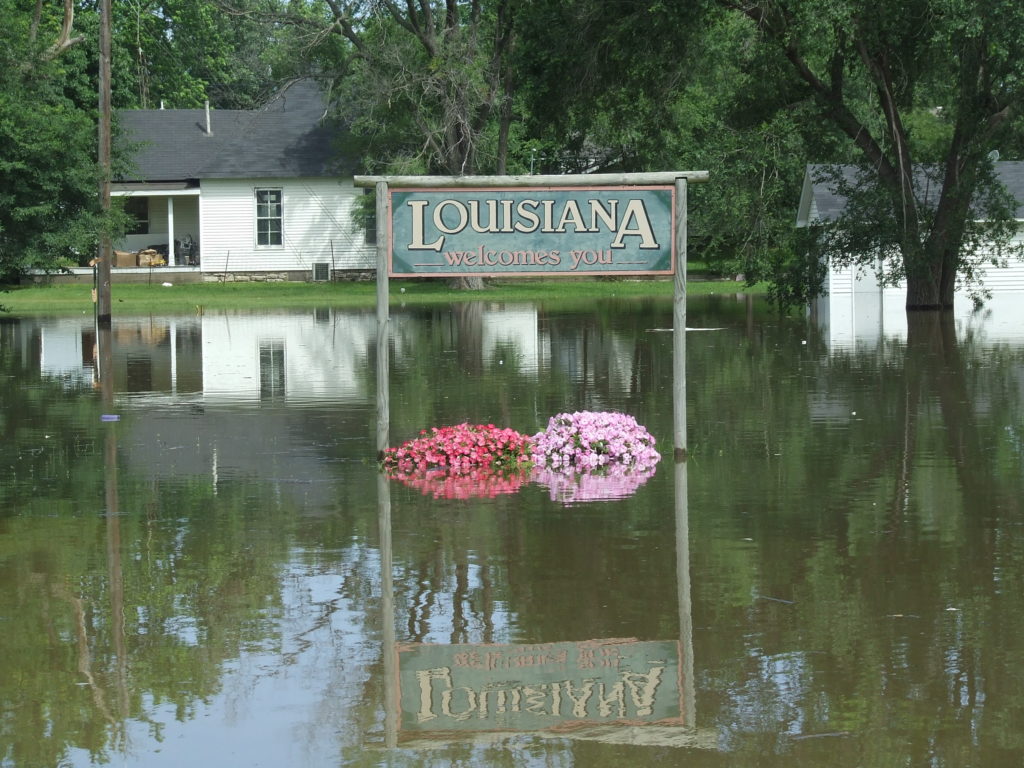Louisiana, like many coastal regions around the globe, is sinking into the sea. Years of canal dredging, built so the oil industry could travel through the bayous, have turned marshes into open ocean. Levees have blocked the natural flow of the Mississippi River, stopping the sediments that strengthen the wetlands. Meanwhile, sea levels are rising. Storm surges grow in a warming climate, wiping out acres of land in hours.
Villages that have existed for generations now must be shut down. The Louisiana government is leading an expensive project to rebuild the Isle de Jean Charles community beyond the reach of the waves. As the ocean continues its slow march forward, more people will be displaced. They need a place to go.
When I was in second grade, Hurricane Katrina devastated New Orleans. In the next few weeks, my school gained a handful of new students, all victims of the storm. I grew up in Alabama, far from the worst of the damage. My new friends and their families came to build a new life, out of reach of the floods.
Residents of Louisiana have one strength that people in other sinking landscapes do not: they can cross borders, escaping disasters and rising oceans. The United States is a federation of state governments, each overseeing territories with unique laws and cultures. Yet there are no border checkpoints. Louisiana residents can freely move to Mississippi or Alabama at any time for any reason. They do not have to worry about asylum requests, looming deportation, or dangerous border crossings. People in small island developing nations like Tuvalu and Vanuatu do not have that freedom, and they too are on sinking land.
But as climate change threatens coastal regions around the world, our freedom of movement is disappearing. The modern political era is marked by international symbols of liberation, like the falling of the Berlin Wall, yet ordinary people are more contained today than at any point in recent memory. Thousands more people die at borders today than at the close of the Cold War. Dozens of border walls have been constructed since the 1990s, choking off the free movement of workers and refugees.
Meanwhile, greenhouse gases do not see borders. They drift over walls and across oceans with no regard for sovereignty or justice. The United Nations and the World Bank both project that millions of people will become climate refugees by 2050, largely poor people in developing nations forced from their homes by an environmental disaster they did not cause. If present trends continue, those refugees will be met by walls.
On the other hand, corporations can easily cross borders, using cheap labor in developing nations to reduce production costs and favorable treaties to ship finished goods across the world. The wealthy can buy visas and plane tickets. But subsistence farmers in the Sahel region are forced to make dangerous crossings over the Mediterranean to escape environmental disaster. Freedom of movement exists, but only if you are able to pay.
We already know what open borders would look like. Both the European Union and the United States have shown that free movement improves both the overall economy and the lives of individuals. Americans can travel to find better opportunities in other regions of the country or to escape shifting coastlines and storms. Individual countries in the European Union have maintained their unique cultures even while allowing free movement.
The success of open borders should not come as a surprise. The United States did not create a border control until 1924, and the agency remained small for decades. Through much of the twentieth century, workers and family members crossed freely between Tijuana and San Diego. It was not until the 1990s that the United States militarized the U.S.-Mexico border into the treacherous place we know today. Throughout Africa and Asia, colonizers from Europe imposed borders from the outside. Those arbitrary lines solidified in the decades after World War II, as countries won their independence. Those lines were never designed to respect cultural practices, like migratory populations in the Sahel. Strict, militarized borders are new in world history. The migrant crisis in Europe shows that our experiment with closed borders has failed.
If we continue along with our current path, bickering about even the most milquetoast of carbon taxes, global temperatures are set to rise by 3-5 degrees celsius by 2100. To put that into perspective, interglacial periods are separated from ice ages by 4-7 degrees celsius. We can and should fight this at the source, implementing international treaties like the Paris Agreement to remove carbon from the global economy. But even if we stopped all greenhouse gas emissions tomorrow, we would still face serious challenges. The Earth is already locked into more warming than we have observed, because the climate takes years to respond to the atmosphere. No matter what the next 100 years holds, we must prepare for a warmer world. We know that there will be more climate refugees.
We must rethink the modern consensus on borders if we want to respond effectively to climate change. When forests burn, farms dry up, and houses flood, people will move. Borders assume the world does not shift, that resources and hazards will stay within clean lines. They are unequipped to handle what is to come.
Image Credit: Eagle102.net / Flickr
